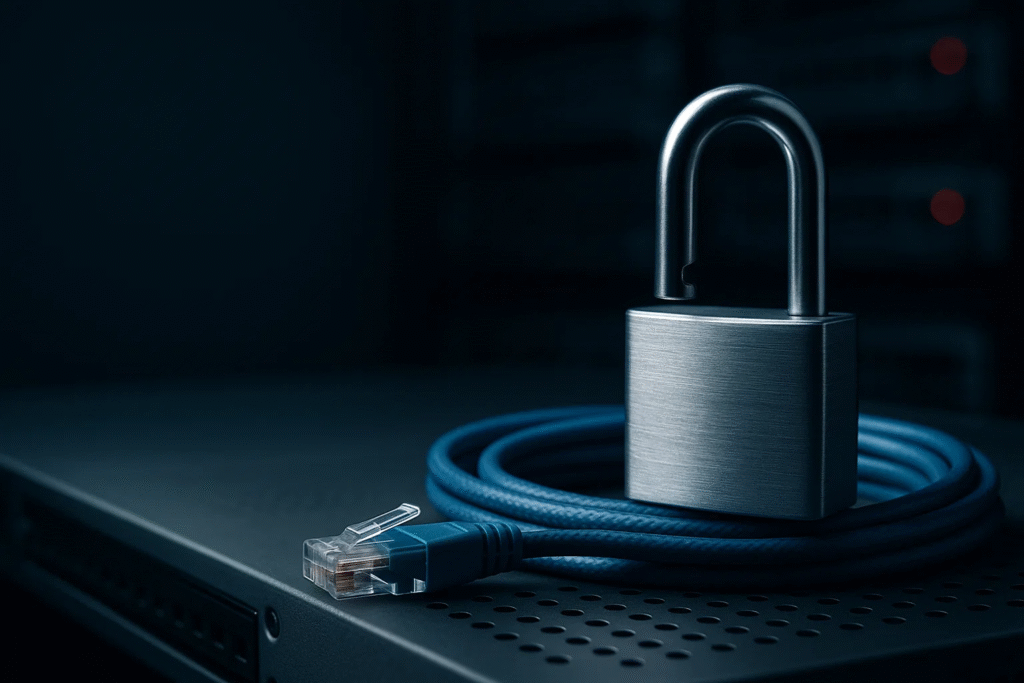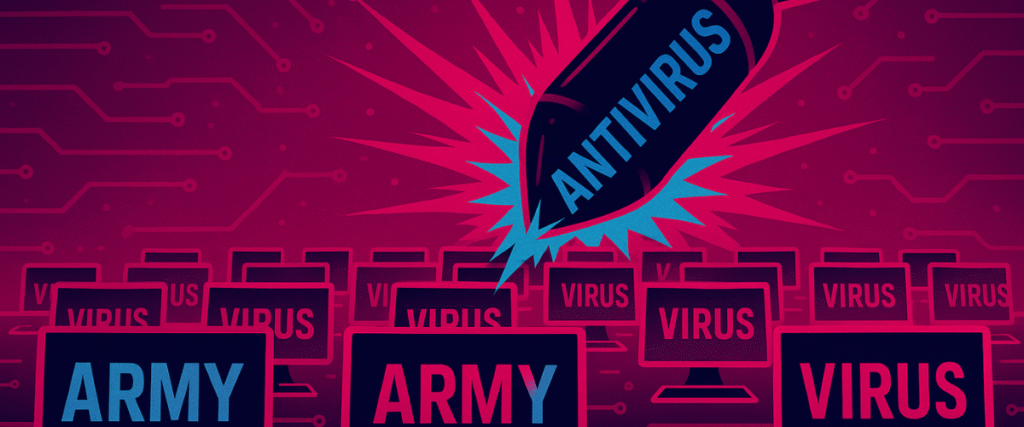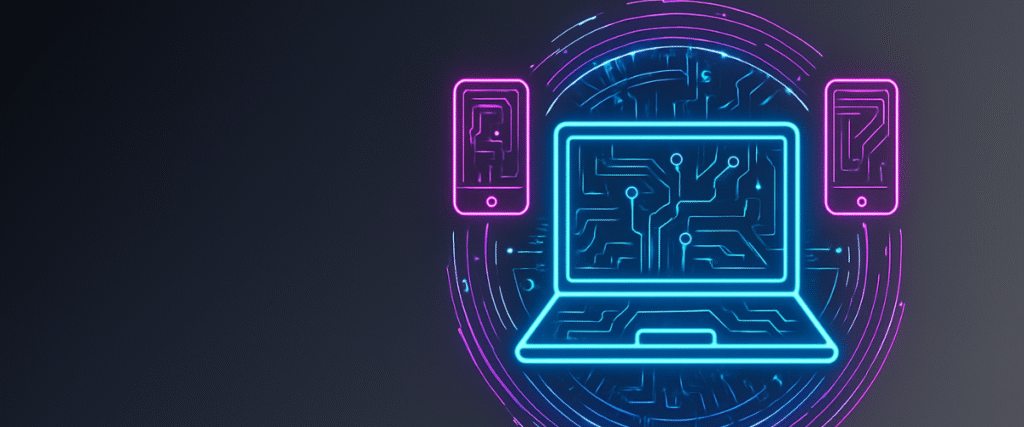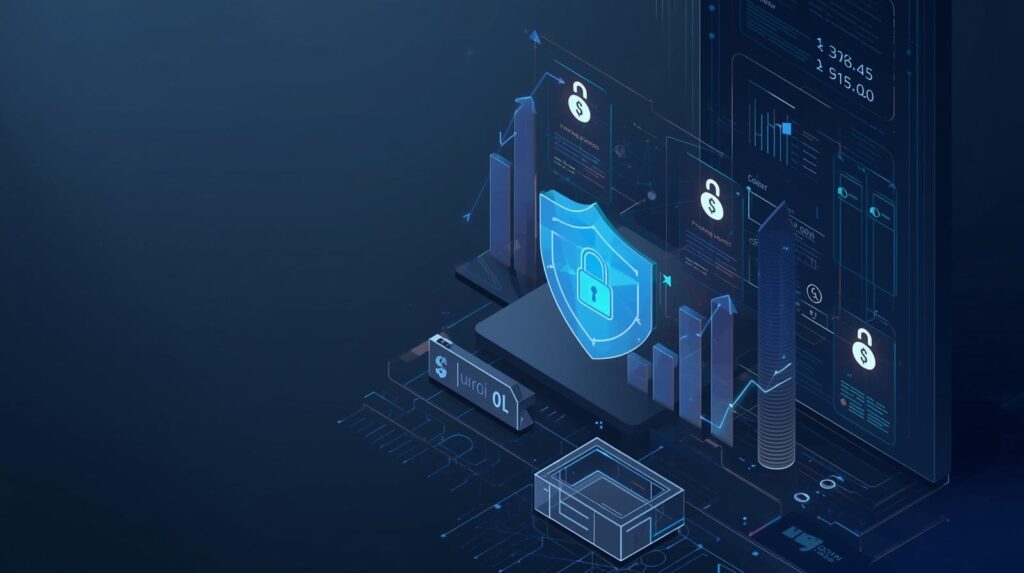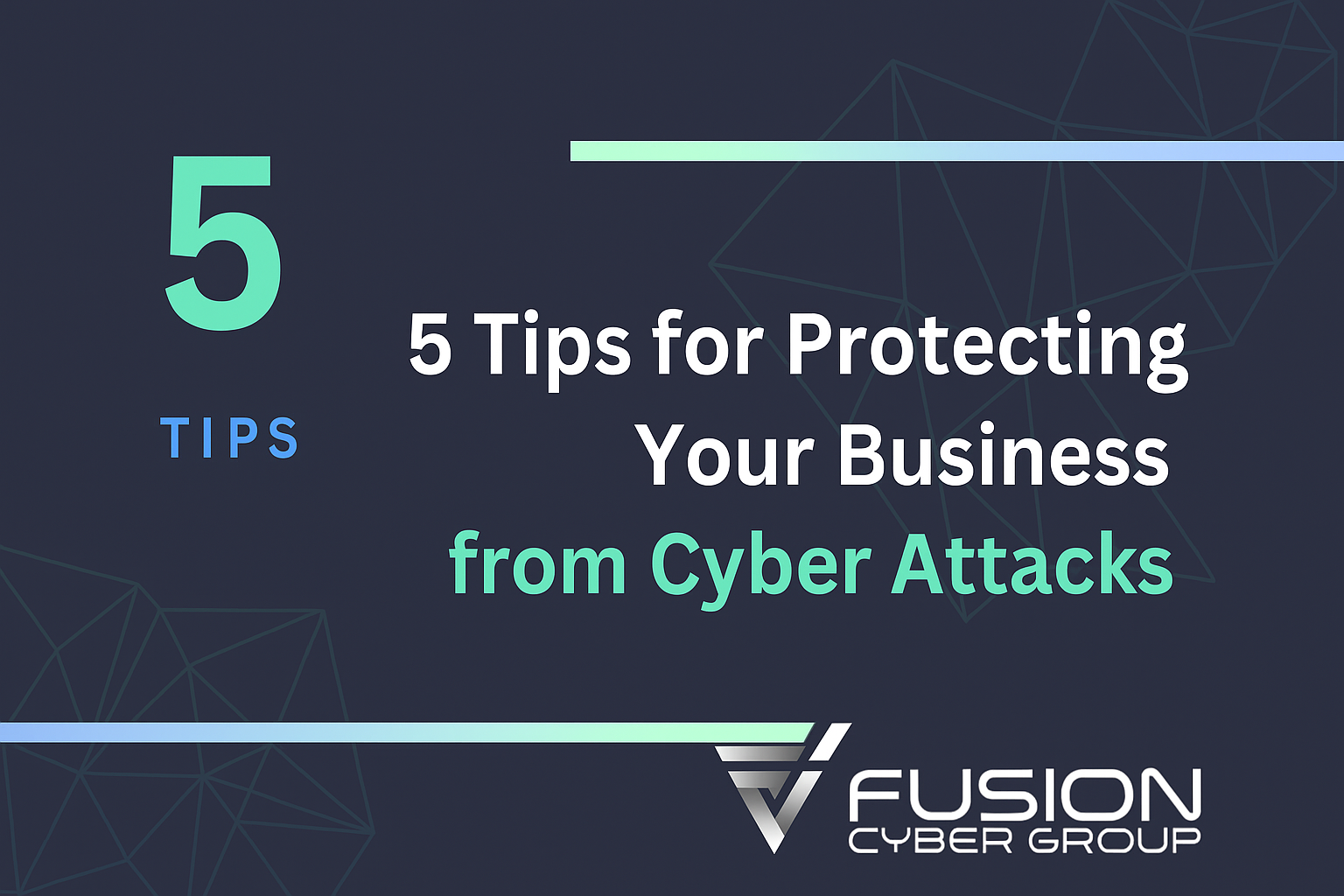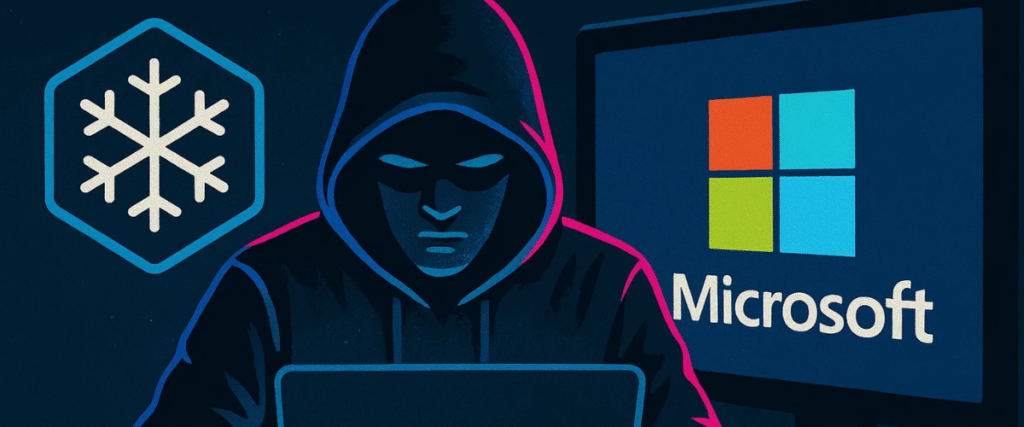Did you know that the network layer is your first line of defense against cyberattacks? Discover how encryption, secure protocols, and robust architecture can shield your data from hackers.
The network layer is the backbone of secure communication between your people, devices, and applications. When it’s strong, data moves safely, operations stay online, and audits go smoothly. When it’s weak, attackers move laterally, exfiltrate data, and disrupt revenue.
This guide translates network security into practical steps for Canadian SMBs.
You’ll learn how to:
- Encrypt data in transit with modern standards (TLS 1.3, IPsec).
- Close risky ports and phase out unsafe protocols.
- Segment your network to contain breaches.
- Adopt Zero Trust Network Access (ZTNA) for hybrid work.
- Monitor continuously so you detect and respond fast.
- No jargon. No silver bullets. Just clear controls, owners, and cadence.
Today’s SMB network isn’t just a switch and a firewall. It’s branch offices on SD-WAN, remote users on home Wi-Fi, workloads in public cloud, SaaS apps, and mobile devices everywhere. The “network layer” spans routers, switches, Wi-Fi controllers, VPN/ZTNA gateways, cloud virtual networks, and the policies that decide who can talk to what. If any link in that chain is weak, attackers will find it and use it.
Common failure modes are flat networks with no segmentation, internet-exposed RDP or SMB. Legacy protocols like SMBv1 and Telnet still enabled. Guest and IoT devices sharing the same subnet as finance systems. Self-signed or expired certificates. DNS without filtering. Sparse logs that make incident response guesswork. These are fixable—and this guide shows you how to fix them quickly and sustainably.
A hardened network layer reduces dwell time, prevents lateral movement, and limits blast radius when (not if) something goes wrong. It supports privacy obligations, strengthens vendor and customer trust, and can lower cyber-insurance friction. Most importantly, it protects your ability to take payments, serve clients, and keep the lights on.
How to use this guide: Treat it as a checklist you can action in phases. Assign an owner for each control. Set a review cadence. Track a few clear metrics: percentage of encrypted flows, number of open inbound ports, segmentation coverage, and MTTD/MTTR from your SOC. Start with quick wins—close exposed RDP, enforce MFA, disable SMBv1, enable TLS 1.3/HSTS, isolate guest Wi-Fi, and turn on DNS filtering—then move to ZTNA and deeper segmentation. The goal isn’t perfection; it’s resilient, measurable defence.

Encryption in Transit (TLS 1.3, IPsec)
Encryption turns readable data into ciphertext so intercepted packets are useless to attackers. Done well, it protects confidentiality and integrity without slowing the business. Modern TLS 1.3 negotiates faster, removes legacy weaknesses, and uses forward-secure key exchanges so even a stolen server key can’t decrypt past sessions. For private links between sites and clouds, IPsec applies consistent, policy-driven protection at the network layer.
Leaving any service on HTTP, Telnet, old TLS, or other plaintext creates easy wins for adversaries. Coffee-shop Wi-Fi, shared office networks, and unmanaged home routers are fertile ground for man-in-the-middle attacks that lift passwords and session cookies. Beyond technical fallout, weak crypto fuels contract disputes, regulatory headaches, cyber-insurance friction, and reputational harm that’s hard to repair.
For web apps and APIs, enforce HTTPS everywhere with TLS 1.3 and modern cipher suites, and enable HSTS so browsers refuse to downgrade. Redirect all HTTP to HTTPS, disable weak ciphers and obsolete key exchanges, and test regularly. These simple moves eliminate accidental plaintext and block common downgrade attempts.
Email deserves equal attention. Require STARTTLS and MTA-STS for server-to-server transport, sign outbound mail with DKIM, and monitor DMARC reports to spot spoofing and configuration drift. Stronger mail transport and authentication measurably reduce credential theft and invoice fraud.
Between offices, data centres, and VPCs, standardise on IPsec/IKEv2 using AES-GCM with Perfect Forward Secrecy. Hardware acceleration on modern firewalls keeps throughput high while maintaining consistent encryption across every tunnel. For user access, consider pairing site-to-site IPsec with ZTNA for per-application connectivity.
Certificates should be run as a product, not a project. Centralise issuance, rotation, and revocation; automate with enterprise PKI or ACME; enable OCSP stapling; and track ownership and expiries. Replace self-signed certificates, ensure SANs match real hostnames, and set alerts so renewals never become a 2 a.m. outage.
Lock down legacy everywhere. Disable SSLv2/3 and TLS 1.0/1.1, retire FTP and Telnet in favour of SFTP and SSH, and harden Wi-Fi with WPA3-Enterprise (or WPA2-Enterprise with strong EAP) to protect local radio traffic. These are low-effort, high-impact changes.
Make it routine. Scan for plaintext protocols internally and externally; anything found gets upgraded, wrapped in TLS, or blocked. Bake TLS checks into CI/CD to catch regressions before deployment. A network or security admin should own the policy, review cipher suites quarterly, check certificates weekly, rotate keys per policy, and time-box any exceptions with a clear path to full compliance.
Secure Ports & Protocols (HTTPS, SSH, SFTP, SNMPv3)
Open ports and legacy protocols are unlocked doors, and attackers scan for them nonstop. Any unnecessary listener or outdated service widens your attack surface and invites opportunistic compromise. Treat every port as a business decision: if it doesn’t enable a defined outcome, it shouldn’t be reachable.
The risks are immediate and well-understood. Exposed services like RDP, SMB, or SSH can provide unauthorised access when credentials are weak, reused, or phished. Plaintext protocols such as Telnet and FTP leak usernames and passwords to anyone on the path, enabling easy credential theft and session hijacking. Forgotten services—left behind after a project or vendor change—become footholds for botnets and initial access brokers who monetise entry into your environment.
A strong baseline starts with a default-deny stance on inbound traffic at every perimeter and inter-segment boundary, allowing only documented business flows. Replace Telnet, FTP, and HTTP with SSH, SFTP, and HTTPS; move legacy POP/IMAP to IMAPS/POP3S. For administrative access, require MFA, restrict by source IP or enforce a hardened jump-host, and capture full session logs for accountability.
In Windows environments, eliminate SMBv1 and enable SMB signing and, where supported, encryption to blunt relay and tampering attacks. Management traffic deserves special care: run SNMPv3 with authentication and privacy, secure NTP sources, and confine all device management to a dedicated, non-routable subnet that ordinary users can’t touch.
Governance keeps things clean over time. Every firewall rule or security group entry should have an owner, a clear business purpose, a review date, and a ticket reference. Time-box exceptions so “temporary” openings don’t become permanent liabilities. Maintain concise documentation that maps ports and protocols to applications and data flows, so audits and incident response move quickly.
Execution is straightforward but disciplined. Begin with comprehensive port scans of all public IPs and representative internal subnets to surface stray services and shadow IT. Close anything unused, consolidate what remains behind reverse proxies or gateways, and document the exceptions with explicit expiries. Put remote administration behind ZTNA for per-app access or a locked-down bastion host that enforces MFA, recording, and just-in-time credentials.
Turn on network flow logs (NetFlow/sFlow) at key choke points so you can see who talks to whom and spot anomalies like sudden RDP bursts or unexpected outbound tunnels. Extend the same scrutiny to egress: block high-risk outbound ports by default and allow only what applications truly require.
Ownership and rhythm matter. A network engineer or your MSP/MSSP should own port and protocol hygiene, with a monthly ruleset review to remove stale entries and a quarterly cycle of internal and external scans to validate the posture. Keep a simple dashboard—open inbound ports, number of exceptions with expiries, percentage of encrypted management protocols—so leaders can see progress and nudge when drift appears.
Read More about the 7 Layers of Cybersecurity
Robust Network Architecture & Segmentation
A flat network is convenient—until it isn’t. When every device can talk to every other device, a single compromised laptop or server becomes a launchpad for lateral movement. Segmentation changes the geometry of risk. By placing logical and physical boundaries between business functions, data classes, and device types, you limit the blast radius of an incident. A ransomware detonation that might have crippled the entire environment instead stalls inside a small, well-defined zone. The result is fewer outages, faster recovery, and lower business risk.
The cost of staying flat
SMBs feel the downside of flat networks in three ways. First, ransomware and worms spread quickly along open east–west paths, encrypting file shares, databases, and backups before anyone notices. Second, shared services and permissive access enable privilege escalation: an attacker steals one set of credentials, pivots through an unconstrained admin tool, and suddenly owns the domain. Third, poor isolation inflates compliance scope. When payment, HR, and guest devices co-exist, audits touch everything, driving up consulting hours, tool spend, and staff time.
What good looks like in practice
A resilient architecture groups systems by sensitivity and purpose—production workloads, finance and HR, general users, guest Wi-Fi, and IoT/OT each live in their own zones. Between those zones sit deliberate control points: firewalls that enforce least-privilege policies; software-defined micro-segmentation that applies identity- and label-based rules down to the workload; and service-level controls that allow only the protocols and destinations each application truly needs.
Public-facing assets belong in a hardened DMZ, isolated from internal networks so web vulnerabilities don’t become internal compromise. Underpinning it all is clean DNS/DHCP hygiene: authoritative DNS, protective DNS filtering to stop known-bad domains, and reserved addresses to keep inventory accurate. Routing follows the principle of least privilege—only explicit, documented flows are allowed between zones. For availability, critical paths ride on redundant firewalls and switches so a hardware failure doesn’t become a business outage.
How to implement segmentation without breaking the business
Start with a simple, honest map of reality. Document who needs to talk to whom, at what ports, and for which business outcome. This zone-to-zone matrix becomes your blueprint. Use VLANs and, where appropriate, VRFs to create clear boundaries, then bind those boundaries with access control lists and next-gen firewall policies. Place a hardened jump-host at the centre of administrative access so admins never connect directly east–west; require MFA, logging, and just-in-time credentials.
For hybrid environments, mirror the same model in cloud VPCs/VNets with route tables, security groups, and cloud firewalls; treat peering links as controlled corridors, not open hallways. As confidence grows, add micro-segmentation to control traffic between workloads inside a zone, especially for high-value databases and domain controllers. The key is iteration: cut the biggest risks first, measure the impact, and refine.
Proving it works (and keeps working)
Segmentation only matters if it holds under pressure. Validate policies with safe, scripted attack-path emulation to confirm that an endpoint compromise can’t reach finance, backups, or identity services. Illuminate traffic with flow logs so you can spot unexpected east–west chatter and tune rules accordingly. Keep documentation living and tied to change management: every rule has an owner, a purpose, and a review date. Exceptions are time-boxed and tracked to closure. Fold these checks into routine operations—monthly ruleset reviews, quarterly architecture walkthroughs, and post-incident adjustments when playbooks meet reality.
Common pitfalls to avoid
Over-segmentation can be as harmful as no segmentation if it chokes legitimate workflows and drives “any-any” bypasses. Resist the temptation to open wide, permanent holes; instead, fix the underlying dependency with a narrow, well-documented rule. Don’t forget egress controls—many breaches rely on outbound channels that ride under the radar. Finally, align naming, IP planning, and identity tagging from the outset. Clear labels make policies readable, auditable, and portable across on-prem and cloud, which is exactly what you need when the environment evolves faster than your wiring closet.
The payoff
When segmentation becomes part of the network’s DNA, incidents get contained, investigations get shorter, and auditors see intent rather than entropy. Your teams work with confidence, your customers experience fewer disruptions, and your risk curve bends in the right direction—all without sacrificing performance or agility.
Continuous Monitoring: IDS/IPS, NDR, SIEM
You can’t fix what you can’t see. Continuous monitoring turns raw network traffic and security events into actionable signals so you catch threats early and respond before damage spreads. The goal is simple: shorten the time between a malicious action and a decisive response, without drowning your team in noise.
Network sensors—whether traditional IDS/IPS at choke points or modern Network Detection and Response (NDR) across segments—watch for suspicious patterns in real time. They spot command-and-control beacons, lateral movement, policy violations, and known bad signatures. When these feeds roll into a central analytics platform, you stop hunting in the dark and start working from evidence.
Without continuous monitoring, attackers can quietly siphon data over “allowed” ports like HTTPS or DNS. Early hints of ransomware—unusual authentication activity, mass file renames, sudden SMB spikes—pass unnoticed. Dwell time grows, recovery costs climb, and customers feel the impact through outages and delays. The longer you go without visibility, the more expensive each incident becomes.
A strong design blends multiple layers. IDS/IPS and NDR provide deep packet insights and behavioural analytics. Protective DNS blocks known-malicious domains and inspects for tunnelling, shutting down common exfiltration paths. A Security Information and Event Management (SIEM) platform ingests logs from firewalls, endpoints, identity systems, cloud services, and SaaS tools, then correlates events to reveal true incidents. Around the clock, a Security Operations Center (SOC) triages alerts with documented playbooks and measured SLAs so nothing languishes in a queue. Threat hunting adds a proactive layer, using frameworks like MITRE ATT&CK to search for techniques that slip past automated rules.

- Building the pipeline: Start by enabling logs everywhere they matter: firewalls, VPN concentrators, DNS resolvers, web proxies, directory services, cloud audit trails, and EDR/XDR agents. Forward them to the SIEM with consistent time sync and parsing so correlation works. Place NDR sensors at the internet edge and between key segments—user to server, server to finance, OT/IoT to anything else—to illuminate east–west traffic.
- From alerts to action: Define severities that align with business impact, then attach SLAs and escalation paths that everyone understands. A critical alert might require investigation within minutes and containment within an hour; a low-severity anomaly can wait for business hours. Tie each alert type to a playbook that lists owners, tools, and decision points, so analysts move from detection to remediation without hesitation.
- Reducing noise, increasing signal: Alert fatigue is the enemy. Tune rules weekly, suppress duplicate events, and enrich alerts with context such as user identity, device posture, asset criticality, and geo-location. Baseline normal behaviour—typical logon times, usual data volumes, standard DNS patterns—so anomalies stand out. As false positives drop, analyst capacity rises and response gets faster.
- Metrics that matter: Measure mean time to detect (MTTD) and mean time to respond (MTTR), and track them by severity. Monitor the percentage of blocked high-risk DNS queries, the number of authenticated admin sessions outside maintenance windows, and the rate of closed-loop investigations with documented root cause. Use these metrics in monthly reviews to prioritise tuning and justify investments.
- Testing your readiness: Run quarterly tabletop exercises that walk through realistic scenarios: a phished user who pivots laterally, a rogue VPN session after hours, or a suspected data leak over DNS. Validate that sensors fired, alerts reached the right people, playbooks were followed, and containment steps worked. Capture gaps in tooling, process, or roles and fix them before a real incident forces the lesson.
- Operational hygiene and retention: Keep time synchronised across all systems to prevent correlation drift. Set sensible log retention—enough to investigate past incidents and meet contractual or regulatory needs—while controlling storage costs with tiered hot and cold data. Protect logs themselves; they often contain sensitive information and must be tamper-evident.
- The outcome: With continuous monitoring in place, small anomalies become quick, contained events instead of multi-week crises. You gain confidence that ransomware can’t sprint across segments, that exfiltration attempts hit DNS and egress roadblocks, and that your team can move from alert to action in minutes. Visibility is not a luxury—it’s the control that turns your network from an opaque risk into a measurable, defensible system.

Conclusion
The network layer is more than a technical component—it’s your first line of defence. By prioritising encryption, hardening ports and protocols, segmenting your environment, adopting Zero Trust, and monitoring 24/7, you reduce breach risk, improve resilience, and protect revenue.
Whether you’re building from the ground up or modernising an existing environment, Fusion Cyber partners with your team to assess risk, design a pragmatic roadmap, implement and validate controls, and keep watch as your business evolves. We align security to your objectives, simplify the stack, and provide clear reporting so leaders see progress in plain language. Engagements are right-sized for SMB budgets and delivered by people who speak both business and technology.
From advisory and implementation to co-managed operations and incident readiness, we help you move fast, stay compliant, and sleep better—without slowing your teams or your customers along the way.
Featured links:
Managed Cybersecurity Services
NIST SP 800-207 — Zero Trust Architecture
MITRE ATT&CK — Enterprise Matrix
FAQ:
Is TLS 1.2 still acceptable?
Yes—but prefer TLS 1.3 for stronger security and performance. If TLS 1.2 is required for legacy systems, restrict ciphers and plan a deprecation path.
Do we still need a VPN if we adopt ZTNA?
Often no for user access. ZTNA grants per-app access and reduces lateral movement. Keep site-to-site IPsec for branch connectivity.
How many network segments do we need?
Start with at least: user/endpoint, server/production, finance/HR, guest Wi-Fi, and IoT/OT. Add more based on data sensitivity and risk.
What’s the fastest win for SMBs?
Close risky ports (RDP/SMB exposed to internet), enforce MFA, and turn on TLS 1.3/HSTS. These steps cut common attack paths quickly.
How do we measure progress?
Track: % encrypted flows, # of open inbound ports, segmentation policy coverage, mean time to detect/respond (MTTD/MTTR), phishing-to-lateral-movement containment.
SITUATION
Every login, file sync, and customer transaction depends on the network layer being reliable, private, and auditable.
COMPLICATION
Attackers exploit flat networks, legacy protocols, and exposed ports—driving downtime, lost revenue, and higher cyber-insurance premiums.
QUESTION
How can SMB leaders harden the network layer—without adding complexity, slowing the business, or blowing the budget?
ANSWER
Adopt a focused, four-pillar approach with clear ownership and metrics.
Our Cybersecurity Guarantee
“At Fusion Cyber Group, we align our interests with yours.“
Unlike many providers who profit from lengthy, expensive breach clean-ups, our goal is simple: stop threats before they start and stand with you if one ever gets through.
That’s why we offer a cybersecurity guarantee: in the very unlikely event that a breach gets through our multi-layered, 24/7 monitored defenses, we will handle all:
threat containment,
incident response,
remediation,
eradication,
and business recovery—at no cost to you.
Ready to strengthen your cybersecurity defenses? Contact us today for your FREE network assessment and take the first step towards safeguarding your business from cyber threats!

















